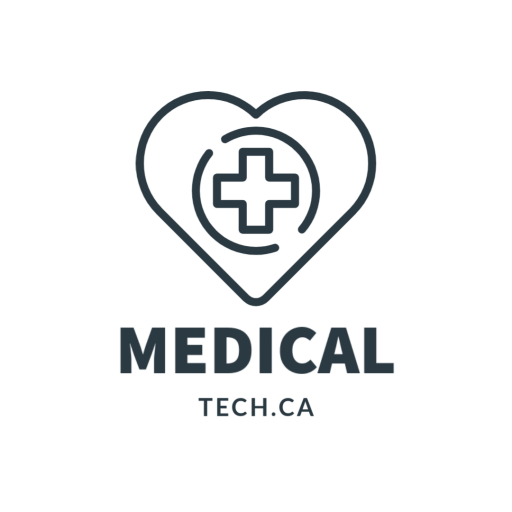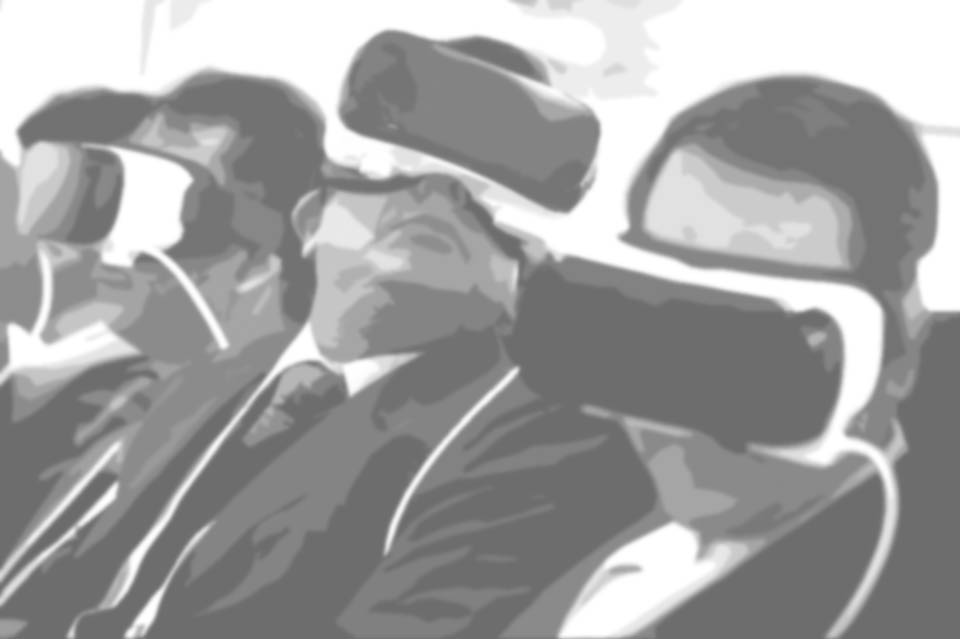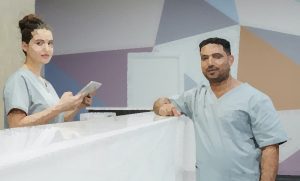
by medicaltechont | Feb 3, 2020 | AI, AR, Google, Samsung, Technology
So what is Augmented Reality Technology anyway? In it’s simplest form it is fusion of an interactive experience. It connects the real-world with a computer-generated one. You can use mobile devices, Smart Glasses, AR contact lenses, VR displays or special hardware. Google jumped into the world early, with the hope of pushing consumer technology forward. Google Glass arrived with fanfare and the possibilities were endless.
With the might of Google how could it fail? Unfortunately it did, but not totally. Google Glass was pricey, and possibly just too ahead of it’s time. Also many had concerns over privacy and how data was being used. However Google did help to push the technology forward. Augmented Reality hasn’t died. It merely has morphed and moved forward, in various forms. Amazon and Samsung have plans, along with a host of other companies. The glassware form of AR is only one aspect of the technology. Continue to follow as we delve into other areas of AR and it’s possible impact in the healthcare field.

by medicaltechont | Oct 23, 2016 | Google, Hardware, Microsoft, Samsung, Technology
Virtual, augmented and mixed reality have a competition problem.
But while most AR/VR companies will tell you how much better they are than their nearest direct competitor, they’re picking the wrong fight. The main event isn’t between Oculus, HTC, Sony, Samsung and Google for VR, or Microsoft, Magic Leap, Meta and ODG for AR (including mixed reality). There are far bigger and scarier competitors out there.
Read more at https://techcrunch.com/2016/10/21/the-reality-of-arvr-competition/

by medicaltechont | Oct 15, 2016 | Google, Technology
PALO ALTO, Calif. — Jim Andrews is in a medical office wearing just a hospital gown, staring at his doctor of 11 years, who is staring back at him through the sleek, metallic lens of Google Glass.
As the doctor examines Andrews, a new kind of medical scribe is watching the examination, transcribing everything he sees. The scribe, named Rahul, is thousands of miles away in India, and he is viewing the office visit live through the pint-size, WiFi-connected camera attached to the doctor’s glasses.
“When was his last physical?” the doctor, Albert Chan, asks as he listens to Andrews’s breathing and checks his reflexes. Rahul’s nearly immediate answer pops up in a text bubble display in the right corner of the doctor’s field of vision. “June 3, 2014!”
Read more at https://www.washingtonpost.com/business/economy/medical-scribes-track-doctors-examinations-from-thousands-of-miles-away/2016/09/27/2c269f54-7c23-11e6-ac8e-cf8e0dd91dc7_story.html

by medicaltechont | Dec 20, 2014 | Canada, e-Health, eHealth, EHR, emr, Google, Ontario MD, Open-Source, Software, Technology
 Did we see this coming?
Did we see this coming?
Well the last 2 to 3 months have been interesting and a bit disconcerting, for medical professionals in Ontario. We now have 3 instances of uncertainty with technology, for those attempting to move forward with EMR in Ontario. Some of the issues could not have been foreseen. However in others we may have to address the collective wisdom, at the time, of the body responsible for certifying vendors in Ontario.
The OntarioMD mandate is to enhance EMR use in Ontario. As indicated on their website:
“OntarioMD manages the Electronic Medical Records (EMR) Adoption Program on behalf of eHealth Ontario to help community-based family physicians and specialists transition from paper records to EMRs to enhance patient care and practice efficiency. Eligible physicians receive funding and other supports to assist them with the implementation of an EMR and optimizing their EMR use.”
There is a host of initiatives by OntarioMD. However, in essence, so far they have created a certification process; where private vendors ensure that their software applications meet regulated standards. The process, overall, has been successful ; helping Ontario to finally move forward in EMR and data integration. Unfortunately there have been some recent bumps in the road.
Bell Canada is getting out of the market?
With TELUS Health making significant inroads in the EMR market who would have thought that Bell Canada would decide to step out and close its EMR offering? The OntarioMD website has already been updated indicating the following:
“Bell Canada has announced, as of December 1, 2015, the Bell EMR Service will no longer be available. Information for physicians using the Bell EMR offering.”
What does this mean for clients? Change is on the horizon. Basically by December 1, 2015, Bell EMR will be no more and clients will need to move to a certified solution. Unfortunate for those who have already spent a significant amount of time and resources getting up to the EMR standard in Ontario.
Jonoke was suspended? What?
Jonoke Software Development Inc. has been a long-standing player in the EMR market, even before there were specific standards set out by OntarioMD. Albeit their website still looks a bit dated, with a copyright dating back to 2012. OntarioMD has already indicated the following on their own website.
“Suspended** effective November 21, 2014. During the period the EMR offering is suspended, the EMR vendor is not permitted to promote or sell the EMR offering as funding eligible to physicians selecting an EMR from the EMR Adoption Program.”
What does this mean for clients? Who knows, the suspension online seems to be clouded in mystery. We can only hope that it’s not serious.
OntarioMD and vendor battle over new OSCAR EMR? What changed?
OSCAR EMR (community software created out of McMaster University) is an interesting player in the EMR market. It was amazing that an open-source vendor was able to get successfully certified, when specific standards are set out by OntarioMD. Open-source generally allows individuals and / or corporations to modify the code under GPL; as long as the code is provided back to the “Community”. Question is how can OntarioMD even manage this situation, when OSCAR has “9 OSCAR certified vendors“? OSCAR allows certain companies to distribute OSCAR EMR on their behalf. However missing from the list is the darling of the group “Indivica“, who is no longer listed as a vendor. OntarioMD has not talked much about the dispute, other than posting a link to the news article and the response under the vendor news section. However OSCAR has listed the following:
“Important Notice Regarding Indivica – The software currently being installed by Indivica does not meet the requirements to be an Affiliated Product of OSCAR EMR and is not the Ontario EMR Specification 4.1a Funding Eligible Offering from OSCAR EMR.”
What does this mean for the many clients of Indivica, in Ontario? Possibly uncertainty and more confusion. Being that Indivica has changed the code, OntarioMD would need to re-certify the application. However OntarioMD may not necessarily have the resources to check the application every time it changes; in addition to all of the other vendors pushing OSCAR. Can OntarioMD ensure that all vendors of OSCAR EMR are certified? Where are the controls on the process or basic code? Moreover it questions the concept of open-source in EMR. How can a certified product allow code to be modified if there are standards to be followed? There are so many who claim to have “OSCAR” versions that it may become confusing for clients. It may be time for OSCAR to “close” the code or choose one vendor for their application for certification. This would be difficult since it would fly in the face of open-source. You don’t have to look far for an example. Just ask Google who was faced with the same situation. Google’s Android was forked by the mighty Amazon. There is also Cyanogenmod, a pure forked version of Android. Google does not have the ability to totally control the situation, being that Android is a form of open-source and Linux. Eventually, Google may opt to merge Android with Chrome OS and close the system. However I doubt this will happen soon. The growth of Android, as a challenge to Apple’s IOS, is in part due to the OEMs who Google turned a blind eye to in order to expand Android’s presence.
Choices need to be made soon
 OntarioMD and the eHealth Ontario may have some tough choices to make in order to move EMR forward. They have systems in place to handle situations like this, however the uncertainty places many medical professionals in a difficult position. Imagine going forward with a new EMR application, such as Bell, and being told that they have to change? Or learning that your EMR application vendor has been suspended? Or lastly working with a vendor that decides to go it alone, causing one to loose funding? The times are indeed changing dynamically, however it will get better. Stability is needed and standards must be met in order to move medical offices, hospitals and the technology forward. Besides the Ontario government does not necessarily have cash to burn in these trying times.
OntarioMD and the eHealth Ontario may have some tough choices to make in order to move EMR forward. They have systems in place to handle situations like this, however the uncertainty places many medical professionals in a difficult position. Imagine going forward with a new EMR application, such as Bell, and being told that they have to change? Or learning that your EMR application vendor has been suspended? Or lastly working with a vendor that decides to go it alone, causing one to loose funding? The times are indeed changing dynamically, however it will get better. Stability is needed and standards must be met in order to move medical offices, hospitals and the technology forward. Besides the Ontario government does not necessarily have cash to burn in these trying times.

by medicaltechont | Mar 19, 2014 | Google, Samsung, Software, Technology
Through its relentless innovation and discovery, Samsung Electronics West Africa has introduced into the smart phone econ-system Samsung Galaxy S5 with a built-in heart rate sensor that enables new features in the S Health 3.0 app, as well as a finger print scanner that puts it on par with Apple’s TouchID feature on the iPhone 5S.
The new product which is compliant with IP67 dust and water resistant will be available in the global markets next month.
With the enhanced S Health 3.0, the new Galaxy S5 offers more tools to help people stay fit and well. It provides a comprehensive personal fitness tracker to help users monitor and manage their behavior, along with additional tools including a pedometer, diet and exercise records, and a new, built-in heart rate monitor.
Read more

by medicaltechont | Nov 9, 2013 | Education, Google, Technology
University of Alabama at Birmingham surgical team has performed the first surgery using a virtual augmented reality technology called VIPAAR in conjunction with Google Glass, a wearable computer with an optical head-mounted display. The combination of the two technologies could be an important step toward the development of useful, practical telemedicine.
VIPAAR, which stands for Virtual Interactive Presence in Augmented Reality, is a UAB-developed technology that provides real time, two-way, interactive video conferencing.
UAB orthopedic surgeon Brent Ponce, M.D., performed a shoulder replacement surgery on Sept. 12, 2013 at UAB Highlands Hospital in Birmingham. Watching and interacting with Ponce via VIPAAR was Phani Dantuluri, M.D., from his office in Atlanta.
Read more





 Did we see this coming?
Did we see this coming? OntarioMD and the
OntarioMD and the 
